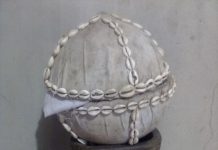Yes there are early Hadith collections. One of the claims hurled at Muslims by Christian missionaries and Hadith-rejecters are that they say, “there are no hadiths collections from early Islam”. According to them, Hadith came into existence 250 to 300 years after the Prophet Muhammed’s (p) demise. In this article I will show evidences from non-Muslim Scholars that Hadith existed way before the dates they have brought forth.
First Century Hadith Collections
Sahifa Hamman B. Munabbih
It is well-known fact among Muslim scholars that Hammam B. Munabbih was a student of Abu Huraira. The earliest hadith collection we have extant is Sahifa b. Munabbih which was written by the student of Abu Huraira. The Books name is ‘Sahifah Hammam b.Munabbih’.
1. American Scholar William Albert Graham who is a Professor of middle eastern studies states:
“…..Of the four remaining collections, the earliest is the Sahifah of Hammam b. Munabbih (d. Ca. 101-02/719-20). It is a collection of 138 hadiths that dates from around the end of the first Century A.H. and contains some eighteen Divine sayings.” [1]
2. Professor Alfred Felix Landon Beeston also comments on Sahifa Hammam B. Munabbih,
“An example is the Sahifah of Hammam b. Munabbih, (d. 110/719), a Yemenite follower and a disciple of Companion Abu Hurayrah, (d. 58/677), from whom Hammam learned and wrote this sahifah, which comprises 138 hadith and is believed to have been written around the mid-first/seventh Century.
It is significant that Hammam introduces his text with the words: ‘Abu Hurayra told us in the course of what he related from the Prophet’, thus giving the source of his information in the manner which became known as sanad or isnad i.e. the teacher or chain of teachers through whom an author reaches the Prophet, a practice invariably and systematically followed hadith in compilations. [2]
3. In the Book ‘Encyclopaedic Historiography of the Muslim World’, written by Professor Nagendra Kr. Singh, he goes in detail on Hadith and also comments on Sahifa B. Munabbih. Take also notice of him saying that ‘ORAL TRANSMISSION’ OF HADITH was the most favoured. He writes:
Compilation of hadith in a book form had become a known practice even during the prophet’s lifetime. We are told that Ali b. Abu Talib had compiled a small book containing Traditions of the Prophet, ‘Abdullah b. ‘Amr b. Al-As has also collected by permission of the Prophet, some Traditions in a book, which he named as al-Sahifa al-sadiqa. Similarly, Jabir b. Abdillah (d. 78 A.H.) was the compiler of a small collection of hadith. Abu Huraira and Amr b. Hazm are also reported to have gathered some Traditions while the latter had also committed to writing a number of such letters of the Prophet as he had despatched to the neighbouring rulers inviting them to embrace the new faith. Abu Huraira, a close companion of the Prophet, had preserved and transmitted a large number of traditions.
Apart from oral transmission, he is reported to have dictated some traditions to his pupils who committed them to writing.Hammam b. Munabbih compiled a book entitled al-sahifa, of which the manuscripts are found in the libraries of Berlin and Damascus. Its Arabic text along with the Urdu Translation and necessary notes has recently been published by Dr. Hamidullah. Ma’mar b. Rashid, a disciple of Hammam, also compiled a book entitled Jami, Manuscripts of which are in the Ankara University Library and in Istanbul.
Abu Bakr Abd al-Razzaq b. Hammam al-san’ani (126-211 A.H.) was a student of ma’mar and one of the teachers of Ahamd b. Hanbal. He is also the compiler of a book entitled ‘musannaf’. In view of these facts, it would be erroneous to assume, as some of the orientalists do, that the work of hadith-compilation was unknown during the prophet’s lifetime, and hence the entire collection of hadith becomes of questionable authenticity.
We have seen that Abu Huraira, his pupil Hammam b. Munabbih, his disciple Ma’mar and his pupil Rashid, his student Abd al-Razzq and his pupil Ahmad b. Hanbal have made continued efforts in preserving and compiling the hadith literature. After the discovery of these works we may rightly suppose that there must have been some other compiled works which did not come down to us. It should be also kept in mind that because of scarcity and dearth of writing material, oral transmission was a popular practice during the early days of Islam. Furthermore, this had become a common practice since the pre-Islamic days because ‘Days of the Arab’, legends of the Prophets, and the Jahiliyya poetry were transmitted orally. Nay, dictation or writing of such material was rather looked down upon as compared to oral transmission. [3]
‘Musanaf of Abdul Razzaq’ to be a source of Authentic Hadith from the 1st Century’*
Professor Harold Motzki believes ‘Musanaf of Abdul Razzaq’ to be a source of Authentic Hadith from the 1st Century*. His article is massive, I am just going to present his Conclusion.
“While studying the Musannaf of `Abd al-Razzaq, I came to the conclusion that the theory championed by Goldziher, Schacht, and in their footsteps, many others – myself included – which in general, reject hadith literature as a historically reliable sources for the first century AH, deprives the historical study of early Islam of an important and a useful type of source.” [4]
Muwatta Imam Malik’ compiled Mid-second century AH
Mālik ibn Anas who was born in the year 711 and died 795 (93 AH – 179 AH ) is another Early Scholar of Islam who collected hadiths. He was one of the most highly respected scholars of fiqh (Islamic Jurisprudence) in Sunni Islam. Imam Malik while he was alive compiled a Hadith book. The Hadith Book’s name is ‘Muwatta Imam Malik’ and we still have this Hadith book extant to this day.
Ilya Pavlovich Petrushevsky (1898–1977) who was a Professor of History of the Near East at the University of Leningrad for twenty years, comments on Imam Malik’s Muwatta.
“The oldest collections of Hadith were compiled according to tariqs that is, the companions of the Prophet were listed in alphabetical order and under each name the hadith issuing from the particular fountain head would be supplied. This principle of compilation was known as ‘ala r-rijal, ‘ on (the names of) the earliest reporters’. Of the EXTANT COLLEXTIONS of this type two are celebrated. One if the Muwatta or Beaten Track of malik b. Anas (d. 795), eponymous founder of the Malikite system…..” [5]
Professor Clinton Bennett
“Topically arranged (musannaf) works also appear in the mid-second/eighth century. The earliest extant musannaf work is the Muwatta of Medinan Scholar malik b. Anas (d. 179 AH/795 CE), the eponymous founder of the Maliki school of Sunni jurisprudence and teacher of Muhammad ibn Idris al-Shafii (d. 204 AH/820 CE).” [6]
I will finish my article of with a last reference by Professor Michael Bonner who refutes Joseph Schacht’s theory that somehow Hadith could not be traced before the year 718 -719. He says:
“Schacht thought that no hadith could be proved to date from before year 100 of the Hijra (718-719 CE). There is much more to Schacht’s theory than this, but here it will suffice to point out that for several decades in the West, much of the argument over the hadith has been an argument over the theories of Joseph Schacht. Nowadays Schacht’s work, together with Goldizher, is less favoured than it was not very long ago. As more texts of hadith and early Islamic law have become available, several scholars have analyzed these materials, correlating the Isnad (the supporting chain of authority for such hadith itself) in more painstaking and systematic ways than Schacht had done in his day. As a result of this work, we can perceive in RICH DETAIL, the activities of transmission of learning and production of written texts, going on in early periods, sometimes before the cutoff date of AH 100 that Schacht declared to be the outer limit.” [7]
Conclusion: From all the evidence presented it just goes to show how reliable early Hadith transmitters and collectors were. Whatever Muslim Scholars of the past have said on Hadith reliability, now non-Muslim Scholars affirm this truth. I believe everything I have brought forth in this article from Academic sources thoroughly debunk missionary and Hadith-rejecter lies.
References:
[1] Divine Word and Prophetic Word in Early Islam (1977) By William Albert Graham page 82
[2] Arabic Literature to the End of the Umayyad Period (2003) By A. F. L. Beeston page 272
[3] Encyclopaedic Historiography of the Muslim World By Nagendra Kr. Singh volume 1 Page 317 [Author Kr. Singh http://www.easternbookcorporation.com/moreinfo.php?txt_searchstring=3769]
[4] The Muṣannaf of ʿAbd al-Razzāq al-Sanʿānī as a Source of Authentic Aḥādīth of the First Century A. H. Harald Motzki Journal of Near Eastern Studies Volume 50, No. 1 (Jan., 1991), pp. 21
[5] Islam in Iran By Professor Ilya Pavlovich Petrushevsky page 105
[6] The Bloomsbury Companion to Islamic Studies by Clinton Bennett page 80
[7] Jihad in Islamic History: Doctrines and Practice By Professor Michael Bonner page 48
Article Originally drafted by Kaleef K. Karim






